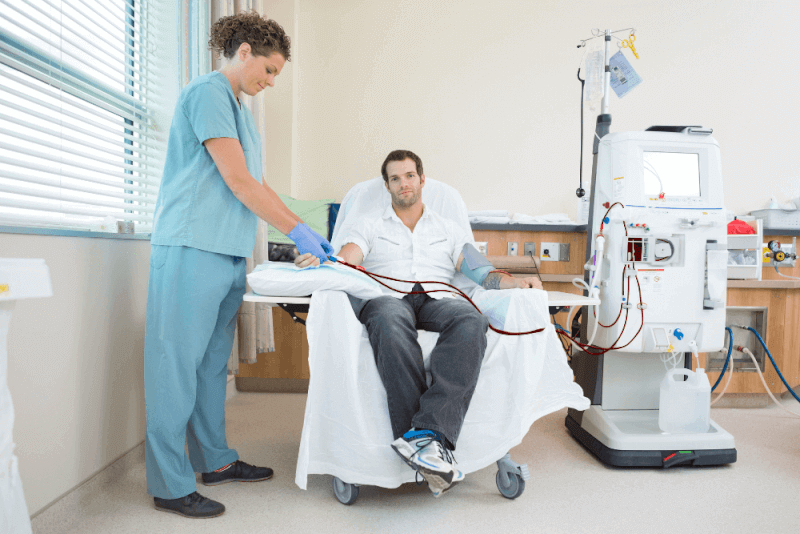30 Second Summary
- A cold is a virus that causes infection of the nose and throat.
- The common cold is one of the most common infectious diseases.
- It causes symptoms such as colds, sneezing, runny nose, sore throat and fever.
- The common cold usually goes away on its own, but in some cases antibiotic treatment may be needed.
What is a Common cold?
The common cold, also called the common cold, is one of the diseases of the throat and nose. The common cold, a virus-borne disease, is known to be caused by more than 200 types of viruses. The main virus families that cause the common cold include adenoviruses, coronaviruses, rhinoviruses and RSVs. The flu, which is usually seen in winter and fall, also has an incubation period. The incubation period of the common cold varies between 24 and 72 hours. The duration of illness is usually one week. In young children, however, this may take longer.
Common Cold diagnostic methods
The average person is expected to catch a cold about 7 times in a year. For this reason, the common cold is an extremely common disease. Because of the characterization of its symptoms, it can be easily diagnosed by physical examination. However, if the patient has complications, then various tests can be performed.
Symptoms of a Common cold
Symptoms caused by the common cold start to appear between 1 and 3 days after infection. The symptoms caused by a cold are usually mild. However, in some cases the symptoms can be severe. For example, if the fever is high or does not go away for a long time, a medical check-up is recommended. Symptoms of the common cold include the following:
- Fatigue
- Sneeze
- Low fever
- Headache
- Sore throat
- Feeling of fullness in the ears
- Runny nose
- Burning in the throat
- Dry cough
- Nasal congestion
- Watery eyes
- Burning sensation in the eyes
How is the common cold transmitted?
The common cold is a respiratory illness. It is therefore transmitted to other people by droplets of the infected person's throat secretions. There are also factors that increase the risk of transmission. These risk factors include the following:
- Places of collective living such as schools or the military
- Crowded environments
- Non-ventilated environments
- Public transportation
- Inadequate sleep
- Weakening of the immune system
- Smoking
- Being in smoking environments
- Close contact with people with a cold
- Inadequate hand washing
- Contact with the belongings of the infected person
- Insufficient disinfection of toys in nurseries and kindergartens
Causes of the common cold
Colds are caused by viruses that cause inflammation of the upper respiratory tract. It is caused by rhinoviruses, which are more active especially in winter. In addition, there are over two hundred types of viruses known to cause the common cold. Since the body does not recognize these viruses, flu is one of the most common virus-borne diseases in the society. In addition, viruses are constantly mutating to survive, making it difficult for antibodies to recognize viruses. For this reason, it is normal for both adults and children to catch a cold more than once a year.
Common cold treatment methods
As with other virus-borne diseases, there is no treatment method that targets viruses in the treatment of the common cold. In addition, a significant proportion of cases can be treated spontaneously with home care. In addition, some medications such as antipyretics, painkillers or nasal decongestants may be prescribed to relieve patients with severe symptoms. In addition, it is sufficient for patients to consume plenty of fluids and rest for the treatment of the disease.
What is good for a common cold?
There are some methods and foods that patients can use at home to reduce the symptoms caused by colds and help them recover in a shorter period of time.
Fruits and vegetables containing vitamin C
Vitamin C makes the immune system work more effectively. For this reason, it is necessary to consume plenty of seasonal and vitamin C-rich foods. Vegetables rich in vitamin C should be consumed raw if possible. Because vitamin C is a vitamin that can easily deteriorate with heat. In addition, patients can use vitamin C supplements in consultation with their physicians.
Mint lemon tea
Mint and lemon tea is one of the most commonly used home remedies for the treatment of colds. To prepare this tea, boil 1.5 cups of drinking water and 2 tablespoons of dried mint in a coffee pot. Lemon is then added and consumed by straining.
Ginger honey
Mixing ginger, which is one of the most powerful herbal sources in the fight against infection, with honey, which has anti-viral properties, will alleviate the symptoms caused by colds in a short time. It is the most suitable home remedy especially for relieving sore throat and burning sensation in a short time. For the preparation of the mixture, it will be sufficient to mix 1 teaspoon of powdered ginger with 1 teaspoon of honey.
Throat lozenges
Throat lozenges available in pharmacies are effective in clearing throat infections as well as relieving sore throat.
Warm milk with cinnamon and honey
The most important point to be considered while preparing cinnamon honey milk is that the milk should not be hot. Because when honey encounters heat, it can cause undesirable health conditions.
Linden tea
One of the most well-known home remedies for colds is linden tea. It is especially recommended to drink it with lemon.
Trotter and chicken soup
One of the ways to get rid of the complaints caused by colds quickly is to consume trotters or chicken soup. In addition to relieving the sore throat in a short time, it also relieves other complaints caused by the flu in a short time.
Herbal teas
Herbal teas such as echinacea, turmeric, ginger, lemon, mint, green tea or sage are also frequently used in the treatment of colds. In addition to increasing fluid intake, they are also effective in alleviating symptoms.
Complications of the common cold
Complications caused by colds are usually seen in infants and children. The most important of these is prolonged coughing in infants due to colds. The lower respiratory tract can also be infected.
It is also very common for young children to develop otitis media after a cold. Nasal congestion during a cold prevents the ear from getting enough air. This causes bacteria to multiply in the ear and cause infection.
Nasal congestion during a cold can also cause sinusitis to fill up. For this reason, sinusitis may occur after a cold. The development of pneumonia and bronchitis after a cold in people with weak immune systems or the elderly, especially infants and children, is among the complications of colds. Colds can also trigger asthma attacks.
The difference between cold and flu
Colds and flu are often confused with each other. It is natural to confuse them, as they are both viral in origin, have similar symptoms and are often seen in the same periods in the community. However, there is an important difference between flu and colds. This difference is a runny nose. Although runny nose and nasal congestion are also seen in colds, runny nose is not usually included in flu symptoms. In addition, the symptoms caused by the flu are much more severe than the common cold.
Common Colds in infants and children
In infants and children, the symptoms of the common cold are more severe than in adults. These symptoms include fever in particular. Because the fever seen in children and babies with colds can reach up to 39 degrees. In addition, the symptoms seen in infants and children include the following:
- Fever of 39 and above
- Runny nose
- Phlegm
- Sneeze
- Fatigue
A doctor's check-up is required to diagnose a cold in infants and children. For this, it is enough for experts to check the throat. However, in some cases, swab tests may also be ordered.
Types of common colds
The common cold is divided into 3 different types.
Short-term common cold
Colds that usually last between 2 days and 1 week are called short-term colds. It is the most common type of cold. It can occur in people of any age and gender.
Symptoms of a short common cold
A short cold usually starts with symptoms of fatigue and weakness. Symptoms that can be seen later include the following.
- Low fever
- Sneeze
- Runny nose
- Sore throat
- Cough
Allergic rhinitis
The symptoms of allergies affecting the respiratory tract are similar to those of a cold. For this reason, many types of allergy, especially hay fever, fall under the heading of allergic rhinitis. Cold symptoms, especially in the spring and summer seasons, bring to mind the possibility of allergic rhinitis.
Symptoms of allergic rhinitis
Symptoms of allergic rhinitis are about 5 times more common in infants and children than in adults. Other symptoms caused by allergic rhinitis, which is characterized by loss of smell, include the following.
- Runny nose
- Nasal discharge
- Nasal congestion
- Sneeze
Chronic catarrh
Although the common cold is one of the most common diseases in society and it is normal for it to affect people more than once a year, in some cases the cold becomes chronic. Chronic colds can turn into flu over time. In order to treat chronic colds, patients are advised to strengthen their immune system, eat a balanced diet and exercise appropriately.
Symptoms of chronic colds
Symptoms of chronic colds and symptoms of short-term colds are similar. However, in chronic colds, the symptoms recur in a short period of time, even if they go away.
Things to consider to prevent the common cold
The common cold is one of the most common diseases, especially in the fall and winter months. For this reason, it is extremely important to pay attention to some points in order to minimize the risk of transmission. Among the points to be considered are the following:
- In nurseries and kindergartens, toys need to be disinfected frequently.
- Smoking should be avoided and smoking environments should be avoided.
- Frequent ventilation of closed environments is recommended.
- Hands and face should not be touched during the day. It is especially recommended to keep hands away from eyes and nose.
- Finally, frequent hand washing is extremely important to minimize the risk of transmission.







